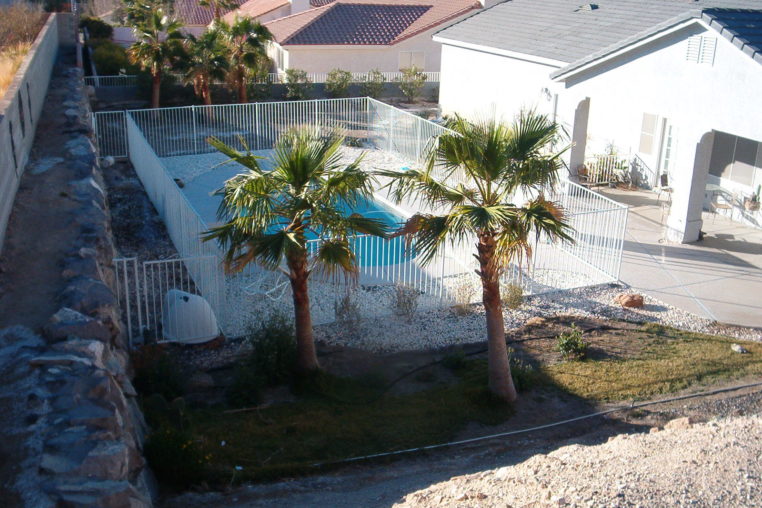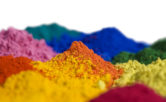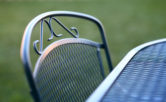
How Summer Can Affect Your Powder Coat (+ Simple Maintenance Tips)
Summers in Las Vegas are uncomfortably hot and can get up to 115 degrees. While it’s generally not humid here in Sin City, the heat is enough to put wear and tear on metal objects exposed to the outside elements. The sun’s UV rays create a huge change in the metal’s temperature, which causes it to destabilize and thin out. As a result, the metal is more susceptible to damage caused by moisture, including rust.
What can you use to protect metal from the elements? Powder coating or wet paint. While both finishes serve a similar function, each type has a unique set of advantages and disadvantages. Let’s discuss why powder coating may be the better option for your needs.
What is Powder Coating? And How Does it Work?
To understand why powder coating is a better choice over wet paint in terms of durability, it’s best to know what it is and how it works. Powder coating is a dry coating used as a metal finish, providing a protective barrier.
Here’s how the process works:
- Before applying the powder coating to the metal, it is cleaned to remove any grease or residue.
- Then, the surface is prepared to bond with the powder during the curing process. It has to be completely dry before applying the coating.
- Organic powder is applied to a metal object using an electrostatic process, which means it uses charged particles to paint more efficiently.
- The powder is cured by baking or heating, which allows for a pure, durable powder coat finish.
Powder Coating vs. Wet Paint
Powder coating and wet paint both contain resins, additives, and pigments. Wet paint contains solvents, but powder coating does not. The solvent in wet paint is what keeps the substance in a liquid form. In contrast, powder coating is dry,
So which performs better in terms of protecting metal surfaces from corrosion and other environmental damage? Powder coating. That’s because it’s more resistant to chipping, scratching, and other wear. Powder coating is a more resistant coating type because it undergoes thermal bonding during curing, and you can apply it in much thicker layers. This is especially advantageous for protecting outdoor products like fencing and outdoor furniture. Powder coating is also highly durable compared with wet paint because the chemical bonds give a superior coating,
Powder coating is more protective than wet paint against:
- Weather
- Chemicals
- Corrosion
- Scratching
- Chipping
Even though powder coating finishes can last up to 20 years, exposure to UV light and other outdoor elements may break it down faster. This process is called chalking, and it causes the resin and pigment particles in powder coating to lose adhesion. The result? A chalk-like layer on the coating surface.
At first, the coating starts to get a faded appearance, which is just a cosmetic issue. But as the resins break down further and further, it starts to compromise surface protection. So maintaining your powder coating is paramount to helping it last as long as possible.
How to Maintain Powder Coating
If you’re planning on using powder coating, it’s crucial to know how to maintain it. Here are some key tips to maintaining powder coated surfaces.
1. Gently Clean Powder Coating
To retain the protective properties of the powder coating, it’s important to clean it regularly. But make sure you avoid solvent-based cleaners because they can damage the finish, which will drastically reduce the lifespan of the powder coating. Instead, use mild detergent and water to clean powder coating. Make sure you thoroughly rinse the surface with filtered water since rainwater and groundwater can cause staining on surfaces due to potential fluoride, sulfur, chlorine, or iron oxide in it.
Also, choose your detergent wisely. Find one that has a neutral pH and built-in emulsifiers that help break down stains. Using water and detergent isn’t absolutely necessary. You can still get away with gently wiping the coating every few weeks to remove dust and prevent buildup. However, in Las Vegas, where dust storms are frequent, you’ll likely need to clean the powder coating more frequently.
Here are some additional cleaning best practices:
- Don’t wait a full year to clean your powder coated surfaces. A year’s worth of dirt and grime requires more pressure and effort to remove, which can damage the finish.
- Avoid abrasive materials like steel wool or abrasive brushes. Use a soft cloth instead.
- Clean powder coated finishes in the shade and during times with minimal sunlight. Higher temperatures during the day in Las Vegas can accelerate chemical reactions and may evaporate water from the cleaning solution.
2. Regularly Inspect for Damage
Make sure you’re regularly checking your powder coated items for scratches, damage, or nicks. And look for signs of rust.
If you notice that your powder coated item has a few imperfections, don’t try to fix them with paint. Why? Because paint won’t stick to the powder coated surface. If the powder coating is starting to show wear and tear, you may be able to scuff away some minor damage with sandpaper. But if the damage is more extensive, look to a professional for help.
3. Protect With Wax Coating
Just like the way you’d use wax to protect your car’s paint job, you should use wax to protect the powder coating’s finish. Certain powder coated objects that will be handled by people or that will come in contact with other objects (i.e. outdoor furniture, guardrails, etc.) can greatly benefit from a coat of wax. Wax is also an excellent solution for adding back the gloss and shine after it’s been washed. When shopping for the best protective wax, it’s important to choose a wax that’s nonabrasive and provides UV protection. Waxes with abrasives can damage the powder coating. After applying the protective wax, be sure to wipe off any remaining wax to avoid permanent staining.
Trust AR Powder Coating for a Durable Finish
Don’t hesitate to contact AR Iron for your powder coating needs. Whether it’s your outdoor furniture, automotive parts, iron fences and gates, or anything else made of metal, we’ve got you covered — literally.




